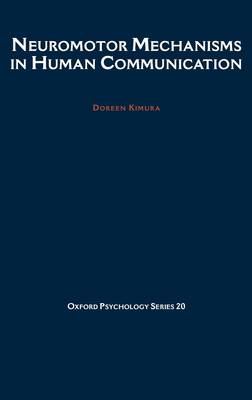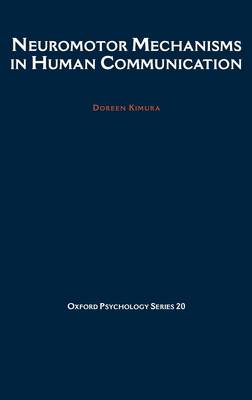
- Afhalen na 1 uur in een winkel met voorraad
- Gratis thuislevering in België vanaf € 30
- Ruim aanbod met 7 miljoen producten
- Afhalen na 1 uur in een winkel met voorraad
- Gratis thuislevering in België vanaf € 30
- Ruim aanbod met 7 miljoen producten
Zoeken
Omschrijving
This monograph is based on 20 years of research with patients who have experienced pathology in one hemisphere of the brain. It deals with brain mechanisms in human communicative behavior, and with related motor functions, from a broadly biological point of view. In so doing, the work discusses the possible evolutionary origins of human communication, the relation of brain mechanisms in communicative behavior to analogous nonhuman behaviors, and the neural systems involved in various levels and kinds of communication. In addition, noncommunicative mechanisms which parallel those used in communication--such as manual and oral praxis, and constructional behavior-- are outlined in detail. Individual differences in brain organization for such functions, related to hand preference and sex, are also explored. Although there is extensive reference to central nervous system pathology, the emphasis throughout is on how the findings contribute to understanding normal brain mechanisms. Much new data is presented along with the theoretical treatment of human communication which emphasizes a behavioral rather than a linguistic approach. This in turn provides continuity with nonhuman primates and early hominids. The work will interest psycholinguists, cognitive psychologists, neurologists, clinical neuropsychologists, speech pathologists, and advanced students in these fields.
Specificaties
Betrokkenen
- Auteur(s):
- Uitgeverij:
Inhoud
- Aantal bladzijden:
- 208
- Taal:
- Engels
- Reeks:
- Reeksnummer:
- nr. 20
Eigenschappen
- Productcode (EAN):
- 9780195054927
- Verschijningsdatum:
- 6/05/1993
- Uitvoering:
- Hardcover
- Formaat:
- Genaaid
- Afmetingen:
- 156 mm x 234 mm
- Gewicht:
- 467 g

Alleen bij Standaard Boekhandel
+ 661 punten op je klantenkaart van Standaard Boekhandel
Beoordelingen
We publiceren alleen reviews die voldoen aan de voorwaarden voor reviews. Bekijk onze voorwaarden voor reviews.











